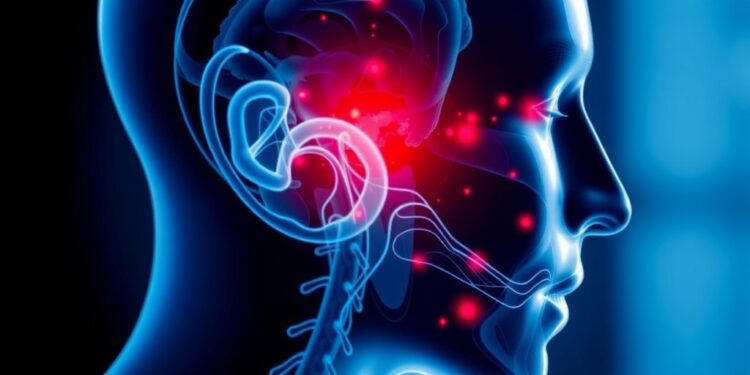
Title: Unveiling the Persistent Stroke Risks Following Transient Ischemic Attacks and Minor Strokes: A Call for Enhanced Prevention Strategies
Transient ischemic attacks (TIA), often referred to as ‘mini-strokes,’ and minor strokes are critical medical events that demand immediate and comprehensive attention. Recent research has illuminated the alarming reality that individuals who experience these episodes are at an exponentially high risk for subsequent strokes. The need for robust and effective long-term prevention strategies is crucial, especially given the concerning statistics that underscore the urgency for immediate action in clinical practices.
The study underscores that the aftermath of a TIA or minor stroke is not simply a fleeting concern but a significant determinant of future health challenges. Individuals who suffer these events often experience lingering vulnerabilities, which can spiral into more serious complications if not adequately monitored and treated. The findings hinge on the acknowledgment that medical professionals and healthcare systems must pivot from reactive to proactive approaches in addressing the winding road of recovery and rehabilitation for such patients.
At the core of the research is the pressing need for a multifaceted approach that encompasses both clinical intervention and lifestyle modifications. Conventional wisdom often equates stroke prevention with medication and clinical follow-ups, yet this study emphasizes that lifestyle changes such as diet, exercise, and stress management play a equally pivotal role. The integrative model proposed within the findings suggests that stroke prevention should not be viewed through a singular lens but rather as a holistic regimen encompassing various elements of health and wellness.
Furthermore, the study meticulously examines the numerous risk factors associated with TIAs and minor strokes, noting that conditions such as hypertension, diabetes, and high cholesterol are significant contributors. These risk factors often coexist, leading to a cumulative effect that dramatically elevates stroke risk. Hence, healthcare providers must undertake comprehensive evaluations of patients, taking into account their entire health profile rather than addressing individual risk factors in isolation.
The implications of the study extend to public health policies, urging for increased awareness and education surrounding stroke risk and prevention. With many individuals remaining oblivious to the long-term ramifications of a TIA, public health campaigns must emphasize the importance of recognizing early warning signs, the need for regular medical check-ups, and the potential for lifestyle enhancements to significantly mitigate risk.
This research also emphasizes the importance of patient monitoring post-TIA or minor stroke, proposing that continuous follow-up appointments and support systems are necessary. Integrating technological advancements, such as telemedicine, can empower patients to engage in their health management actively. By facilitating a streamlined communication pathway with healthcare providers, patients can receive timely interventions and support to navigate their recovery journey more effectively.
Additionally, fostering patient engagement can revolutionize the narrative surrounding stroke prevention. By equipping individuals with the knowledge and tools necessary to manage their health, patients can take ownership of their recovery. Educational resources that provide clear guidelines on lifestyle modifications, dietary choices, and exercise regimens could serve as pivotal components in reducing the risk of subsequent strokes.
As researchers continue to delve deeper into the mechanisms behind TIAs and minor strokes, the hope is that new therapeutic interventions will be identified. The bridge between scientific inquiry and clinical application must be reinforced, ensuring that vital discoveries translate into tangible benefits for patients navigating life after a stroke incident.
It is paramount that healthcare systems recognize the long-term nature of stroke prevention and incorporate this understanding into training for medical professionals. Enhancing the dialogue between patients and providers, as well as between various healthcare disciplines, could foster a cohesive strategy for stroke prevention that tailors to individual risk profiles and lifestyles.
As the findings of this research spread through the medical community, there remains an urgent need to harness these insights for the betterment of patient care. By creating a culture where stroke prevention is prioritized and normalized within healthcare settings, a profound impact on the incidence of future strokes among at-risk populations can be realized.
In conclusion, this study serves as a clarion call for the medical community and policymakers alike to reevaluate current practices and invest in comprehensive stroke prevention strategies. The stakes are undeniably high, and the time for action is now, as the health of countless individuals hangs in the balance. The fight against strokes, particularly after TIAs and minor strokes, requires an unwavering commitment to innovation, education, and collaborative healthcare in order to reduce the toll these silent attacks take on society.
Subject of Research: The persistent risk of subsequent strokes following transient ischemic attacks (TIA) and minor strokes.
Article Title: Unveiling the Persistent Stroke Risks Following Transient Ischemic Attacks and Minor Strokes: A Call for Enhanced Prevention Strategies.
News Publication Date: [Date not provided in the original text].
Web References: [No URL provided in the original text].
References: [No references provided in the original text].
Image Credits: [No image credits provided in the original text].
Keywords: Transient Ischemic Attack, Minor Stroke, Stroke Prevention, Public Health, Risk Factors, Patient Monitoring, Lifestyle Modifications, Telemedicine.
Tags: clinical interventions for stroke riskscomprehensive stroke risk managementhealthcare systems and stroke preventionlifestyle changes post-strokelong-term stroke risk assessmentminor stroke health implicationsmonitoring stroke recoverymultifaceted stroke prevention approachesproactive healthcare for stroke patientsrehabilitation after TIA and minor stroketransient ischemic attack prevention strategiesurgent care for stroke survivors




